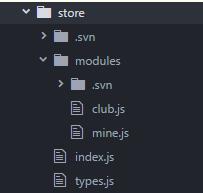Django學習筆記之View操作指南
一個視圖函數(類),簡稱視圖,是一個簡單的Python 函數(類),它接受Web請求并且返回Web響應。響應可以是一張網頁的HTML內容,一個重定向,一個404錯誤,一個XML文檔,或者一張圖片。
無論視圖本身包含什么邏輯,都要返回響應。代碼寫在哪里也無所謂,只要它在你當前項目目錄下面。除此之外沒有更多的要求了——可以說“沒有什么神奇的地方”。為了將代碼放在某處,大家約定成俗將視圖放置在項目(project)或應用程序(app)目錄中的名為views.py的文件中。
導入:from django.views import View
一、查詢所有數據查詢數據在自定義的視圖類中定義get方法
使用django.http模塊中的JsonResponse對非json格式的數據做返回處理
在JsonResponse必須添加safe=False參數,否則會報錯:In order to allow non-dict objects to be serialized set the safe
from django.http import HttpResponse from django import http # Create your views here. class UserView(View): ’’’ 用戶視圖 ’’’ def get(self, request): # 模型類實例化對象 users = UserProfile.objects.all() user_list = [] for user in users: user_dict = { ’id’: user.id, ’username’: user.username, ’password’: user.password, ’open_id’: user.open_id, ’code’: user.code } user_list.append(user_dict) return http.JsonResponse(user_list) 二、創建數據
使用django中的json,把前端傳遞過來的json數據轉成字典
使用django.db.models模塊中的Q來查詢多個字段在數據庫中是否存在
from django.views import View from django.http import HttpResponse from django import http from django.db.models import Q import json class UserView(View): ’’’ 用戶視圖 ’’’ def post(self, request): # 獲取數據, json轉字典 dict_data = json.loads(request.body.decode()) print(dict_data) nick_name = dict_data.get(’nickName’) code = dict_data.get(’code’) open_id = 'xljsafwjeilnvaiwogjirgnlg' # 校驗數據 result = UserProfile.objects.filter(Q(code=code) | Q(open_id=open_id)) if not result.exists(): # 數據入庫 user = UserProfile.objects.create( username=nick_name, open_id=open_id, code=code ) # 返回響應 user_dict = { ’id’: user.id, ’username’: user.username, ’password’: user.password, ’open_id’: user.open_id, ’code’: user.code } return http.JsonResponse(user_dict) return http.JsonResponse('用戶已存在', safe=False, status=202)三、查詢某一條數據(單個)
前端需要傳遞pk/id值,通過pk/id查詢數據,查詢一條數據必須用get,不能用filter,否則會報錯:AttributeError: ’QuerySet’ object has no attribute ’id’
數據轉換
返回響應
class UserProfileDetail(View): ’’’ 詳情視圖 ’’’ def get(self, request): userInfo = UserProfile.objects.get(id=id) if not userInfo: return HttpResponse('查詢的用Info戶不存在', status=404) user_dict = { ’id’: userInfo.id, ’username’: userInfo.username, ’password’: userInfo.password, ’open_id’: userInfo.open_id, ’code’: userInfo.code } return http.JsonResponse(user_dict, status=200) 四、更新一條數據
前端需要傳遞pk/id值,通過pk/id查詢數據,查詢一條數據必須用get,不能用filter,否則會報錯:AttributeError: ’QuerySet’ object has no attribute ’id’
更新一條數據時必須使用filter來查詢數據集,再使用update(**data)來更新數據,不能使用get,否則會報錯:AttributeError: ’模型類’ object has no attribute ’update’
get查詢獲取到的是數據對象,而filter查詢獲取到的是數據集
class UserProfileDetail(View): ’’’ 詳情視圖 ’’’ def put(self, request, id): data_dict = json.loads(request.body.decode()) userInfo = UserProfile.objects.get(id=id) if not userInfo: return HttpResponse('查詢的用Info戶不存在', status=404) UserProfile.objects.filter(id=id).update(**data_dict) userInfo = UserProfile.objects.get(id=id) user_dict = { ’id’: userInfo.id, ’username’: userInfo.username, ’password’: userInfo.password, ’open_id’: userInfo.open_id, ’code’: userInfo.code } return http.JsonResponse(user_dict, status=200)五、刪除某一條數據
class UserProfileDetail(View): ’’’ 詳情視圖 ’’’ def delete(self, request, id): userInfo = UserProfile.objects.filter(id=id) if not userInfo: return HttpResponse('刪除的數據不存在', status=404)UserProfile.objects.filter(id=id).delete() return HttpResponse('數據刪除成功', status=204)
上述的操作只能適用于數據表中字段很少的情況,如果字段較多,寫起來會很麻煩,不利于開發
總結到此這篇關于Django學習筆記之View操作指南的文章就介紹到這了,更多相關Django View操作內容請搜索好吧啦網以前的文章或繼續瀏覽下面的相關文章希望大家以后多多支持好吧啦網!
相關文章:

 網公網安備
網公網安備